
Crinum and Yucca
[Part 1 here: Southeastern Palm Society summer meeting.]
I spent a pleasant and only moderately wet morning taking photos at Plant Delights Nursery and chatting with Tony Avent. In retrospect (especially considering the afternoon rain that made photography nearly impossible later in the day) I probably spent too much time with the begonias, but that's one of my current interests and it's what I wanted to see. Tony is very interested in begonias (although I've yet to find a plant group he's not interested in) and has acquired quite a collection of species and hybrids at the nursery to test for hardiness and commercial potential. We compared notes at length on hardy begonias, not just B. grandis but several other species and hybrids that are proving to be fairly hardy, as well as my own efforts to breed hardy begonia hybrids.

Begonia grandis 'Heron's Pirouette'
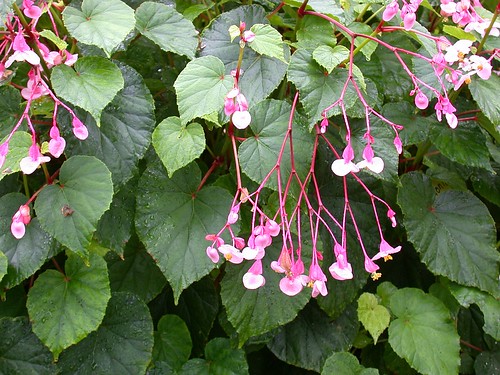
Begonia grandis 'Heron's Pirouette'
I was especially interested in the giant mounds of Begonia pedatifida, a species that has proven quite hardy for me but has never grown as big. Tony is growing several different collections of this species, so perhaps that accounts for the difference. I was also pleased to see two plants I had shared with Tony last year, B. 'Caribbean Star' and U508. Both have been strong-growing plants for me, with large handsome foliage, and both have been hardy through two winters, coming back early and strong. But I was surprised when Tony told me that B. 'Little Brother Montgomery' hadn't made it through the winter, because this cultivar has been hardy through 4 winters in my own garden.
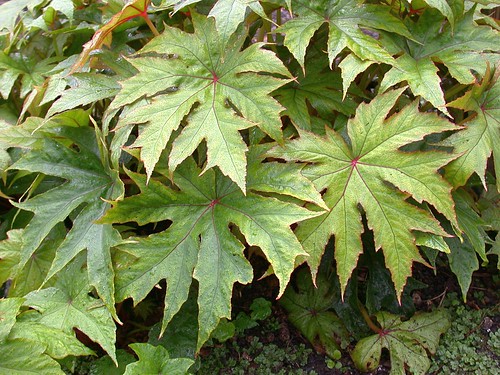
Begonia pedatifida
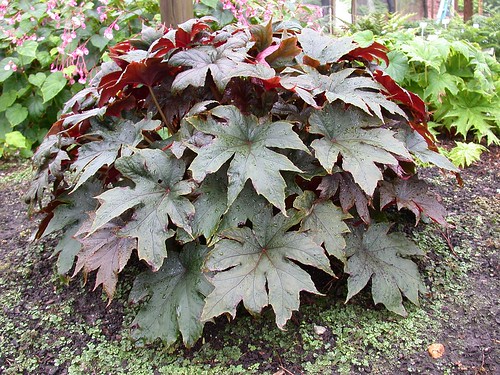
Begonia pedatifida hybrid

Begonia 'Caribbean Star'
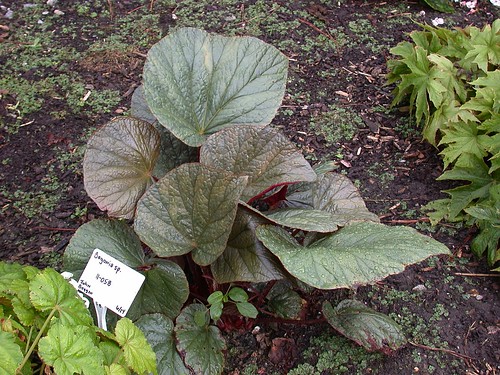
Begonia U508
After getting my fill of begonias I meandered through the shaded gardens, coming across still more begonias as well as a blooming gesneriad, Titanotrichum oldhamii. Begonias and gesneriads make great companion plants, generally requiring similar culture and often found growing together in the wild. Titanotrichum is one of those plants that shouldn't be hardy; it comes from subtropical southern China and Taiwan, and had been in cultivation for over a century with nobody ever noting it was the least bit hardy. So when I saw it listed as hardy to zone 7 in a Plant Delights catalog I was skeptical but sure enough, when I tried it in my own garden in Washington, DC, it proved to be perfectly hardy. That really opened my eyes to possibilities I had never even considered, and now I'm willing to leave almost any plant in the ground over the winter because who knows, I just might discover that one really cool hardy plant that everybody else has overlooked!
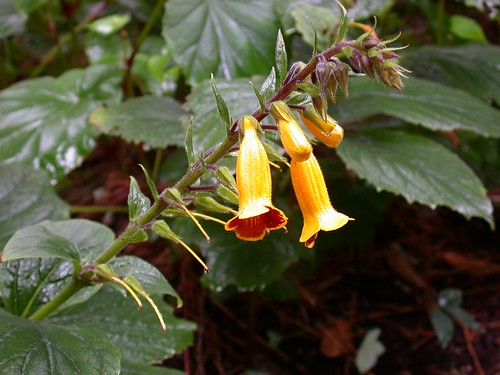
Titanotrichum oldhamii (Gesneriaceae)
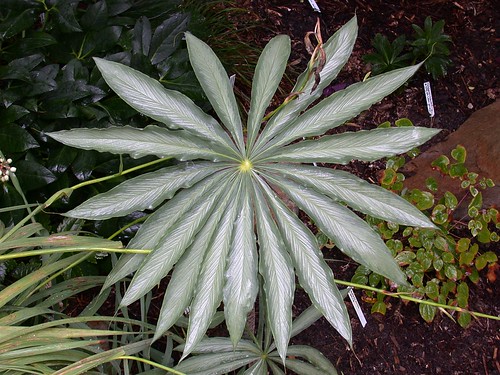
Arisaema consanguineum 'Wild Blue Yonder'
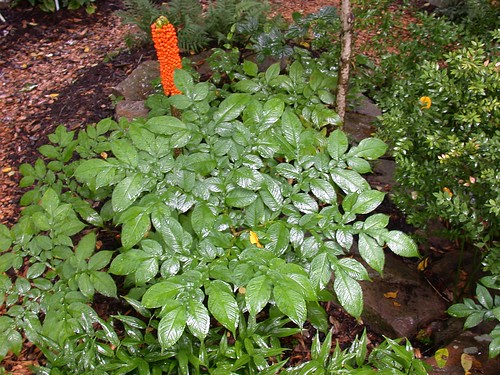
Amorphophallus species with fruits
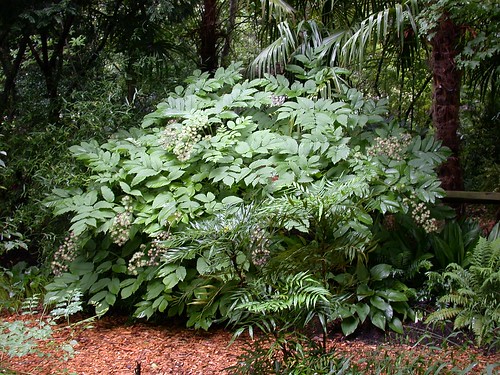
Aralia cordata
In the sunnier areas, I admired the agaves, manfredas, yuccas, hesperaloes, nolinas, and other xerophytes that I love but have no hope of growing in my heavy clay soil and partial shade. One surprise was how well these plants had done, after the area's coldest winter in several years followed by a cool and wet summer. All the agaves are planted on berms or raised beds with perfect drainage, and Tony made the point that in nature, they nearly always grow on slopes.
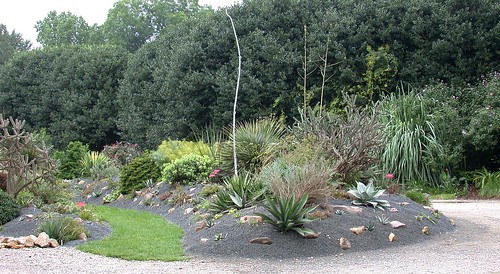
Xeric bed
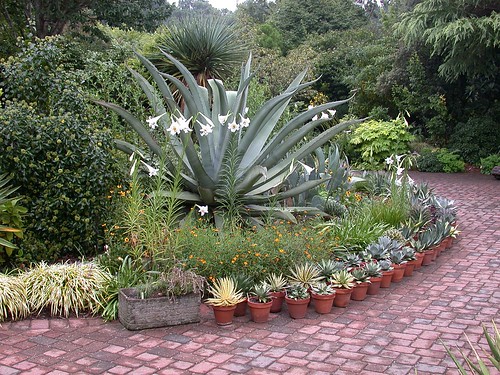
Agave americana hybrid
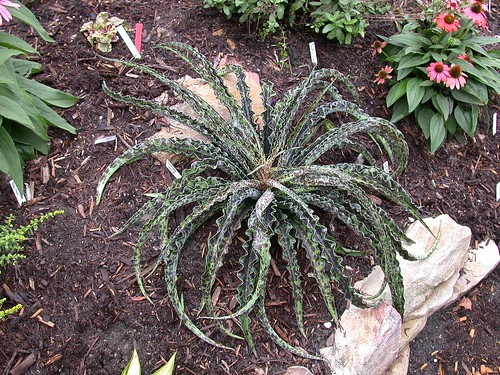
Manfreda undulata 'Chocolate Chips', an agave relative
Crinums and hedychiums were in full bloom. I especially coveted Lilium formosanum towering 6 feet tall and more; I love lilies and tried this one years ago but like many other true lilies I've tried, it petered out after just a couple of years.
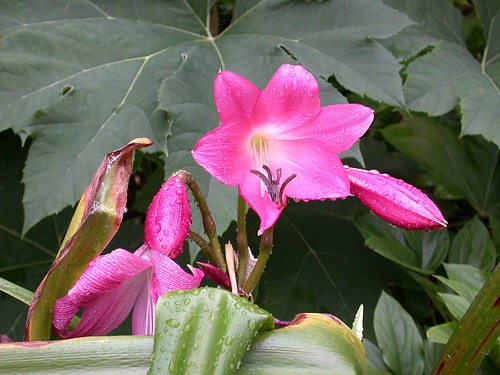
Crinum
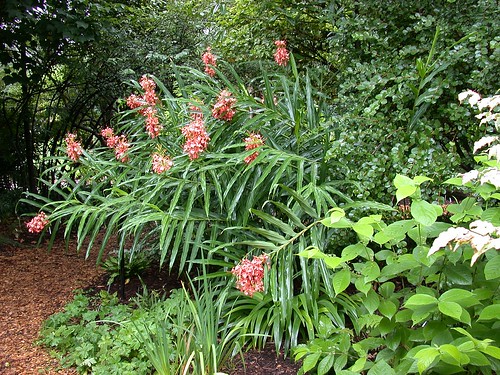
Hedychium
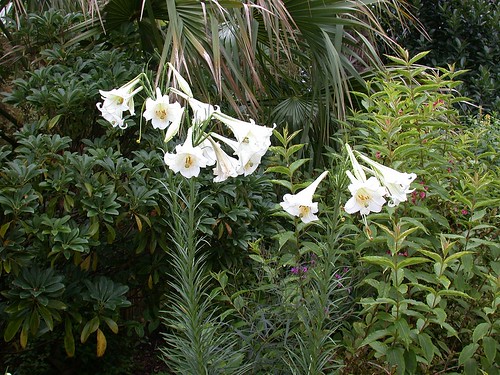
Lilium formosanum
I was pleased to see yet another plant I had shared, Sinningia 'Carolyn'. I gave this plant to Tony in 2007 when I attended my first Southeastern Palm Society meeting; after testing it for several years and finding it hardy, he was impressed enough to list it in the PDN catalog. I wish I could take credit for this plant but I was given it by my Gesneriad Society friend Carolyn Ripps, who had grown it from the society's seed fund. She insisted I try it because of its fragrant flowers; I was unimpressed with it myself, finding it lanky and shy to bloom, until I put it outdoors in full blazing all-day sun. Under those conditions it was compact, vigorous, floriferous, and did indeed have (faintly) fragrant flowers.
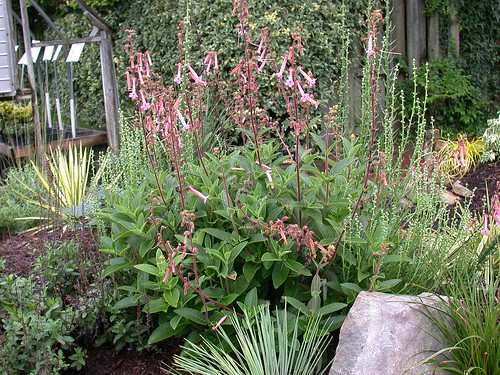
Sinningia 'Carolyn'
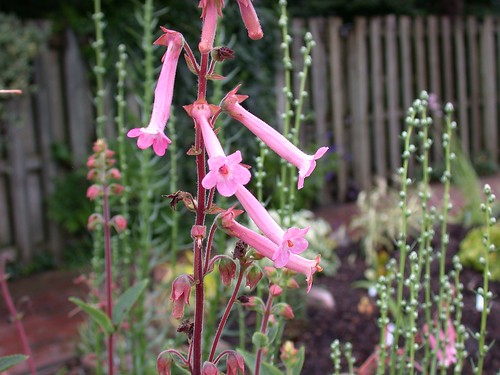
Sinningia 'Carolyn'
And so many double-takes! Even the commonest, dullest plants like liriope, nandina (heavenly bamboo) and kudzu become nearly unrecognizable and exotic in versions with dissected or variegated leaves.
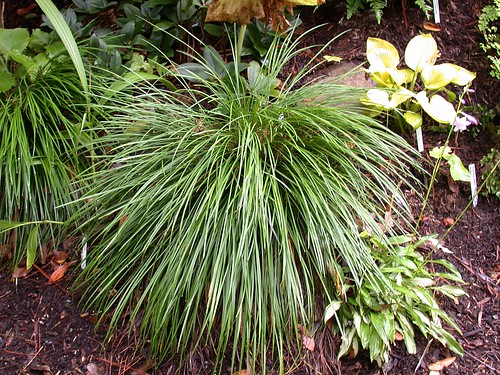
Liriope graminifolia
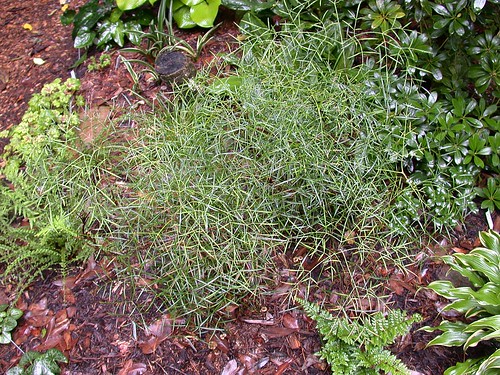
Nandina
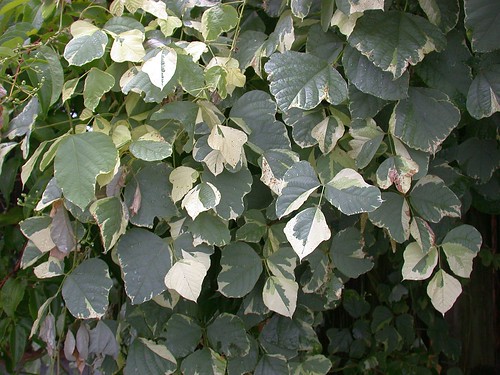
Pueraria lobata, variegated kudzu
Schefflera delavayi was still going strong; this tropical-looking Chinese species was one of my impulse purchases on a trip to PDN last summer, and I'm pleased to report that my own plant made it through the winter and, while still small, is putting out strong new growth.
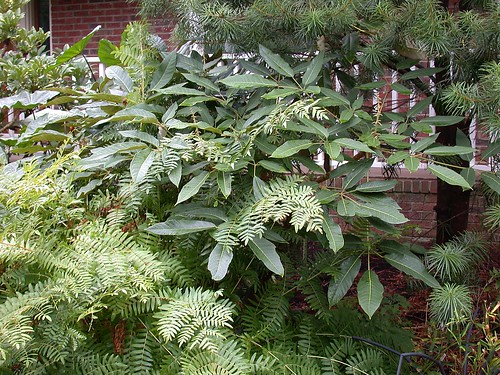
Schefflera delavayi
To read more about the botanical garden plans, see Juniper Level Botanic Garden
For all my photos from this trip, see Plant Delights Nursery 2014
For many more photos that I took at Plant Delights Nursery last summer, see PDN July 2013

JC Raulston Arboretum, entrance planting
The following day, I stopped by JC Raulston Arboretum before heading out of town. The weather was still cool and overcast, but rain held off. I've been to JCRA twice before, and I was anxious to get on the road, so I made a mad dash through the arboretum, photographing whatever caught my eye. Not really the best way to see such a famous arboretum! For all my photos from this trip, see JC Raulston Arboretum 2014 but for many more (and mostly better) photos from last summer's visit, see JCRA July 2013.
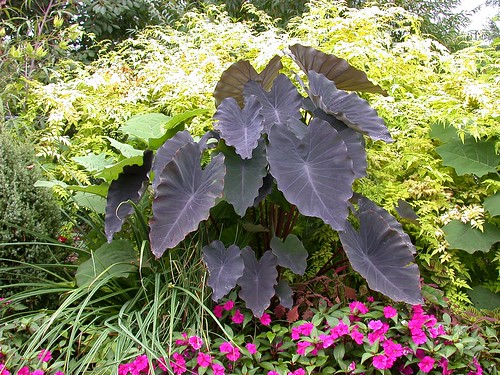
Colocasia esculenta 'Black Magic'
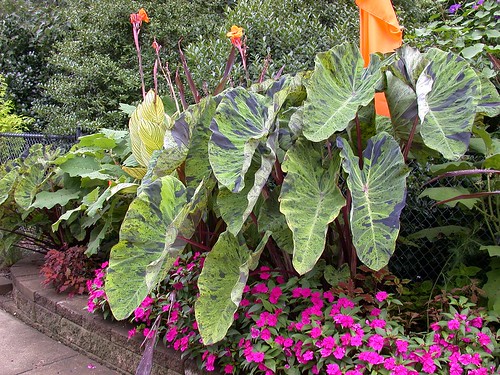
Colocasia esculenta 'Mojito'
As at Plant Delights, there were a number of beautiful, healthy agaves, two of them sending up their spectacular flowering stalks. The agaves at the arboretum are planted on a well-drained slope with other xerophytes.
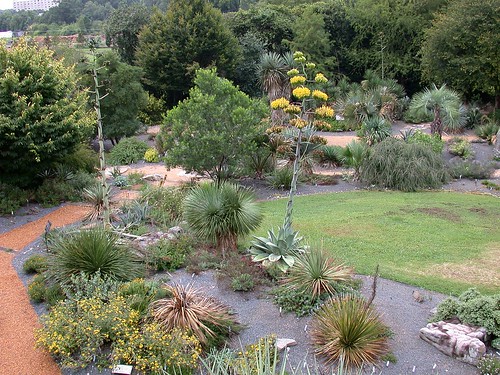
Xeric slope

Agave and Hesperaloe
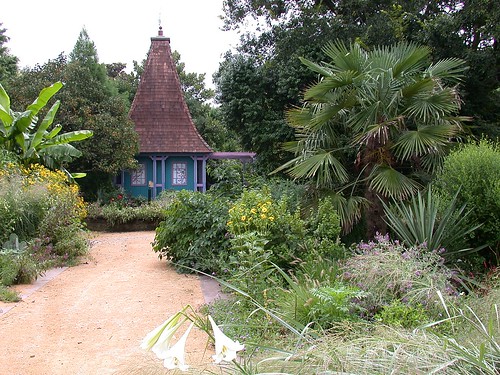
"The Necessary"
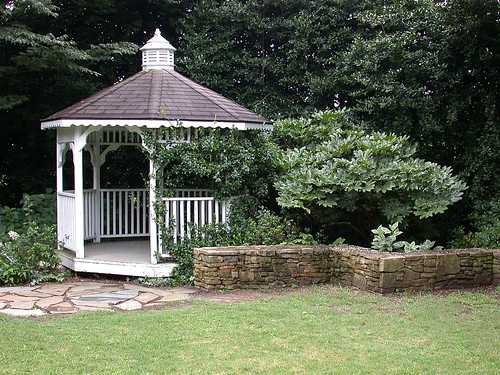
Fatsia japonica
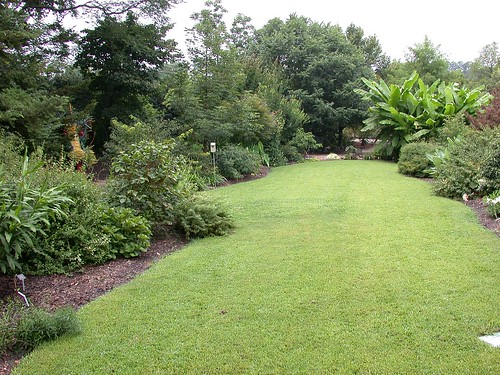
Find the dragon in this picture
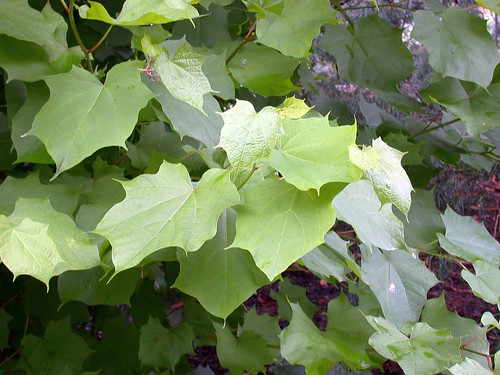
Alangium platanifolium
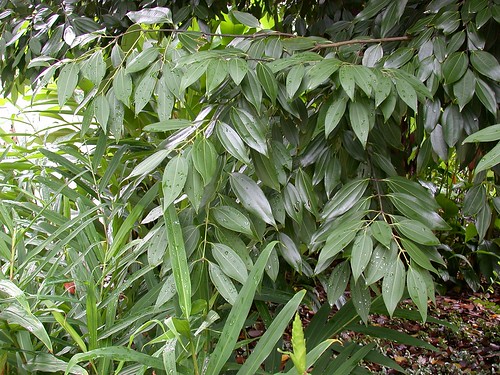
Cinnamomum sp.
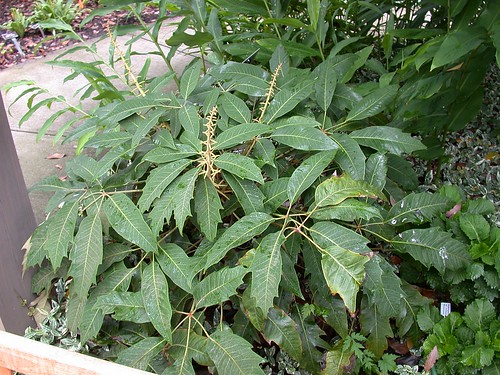
Schefflera delavayi
Finally, one part of the arboretum I made a point to visit was the trial beds. JCRA evaluates hundreds of new plants every year, so this is always a good way to see what's new and interesting. Since the climate is somewhat similar to my own, it's also a good way to see what might do well in my own garden. I didn't have nearly as much time to spend there as I should have, but one plant really stood out, a gigantic dark-leafed grass.
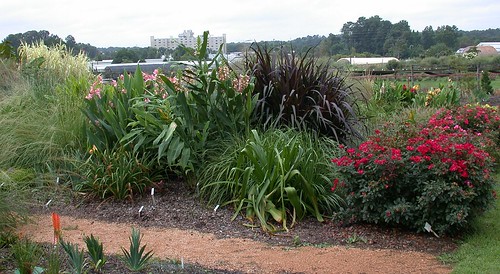
Trial beds
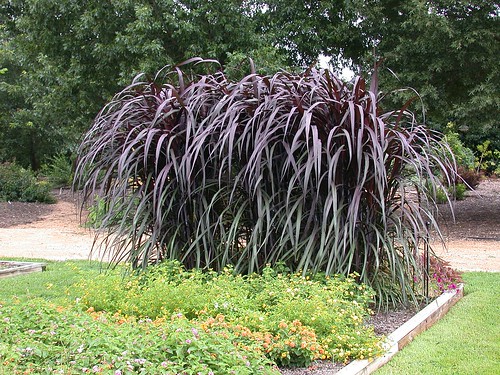
Penniseum 'Black Stockings'
As I look through my photos I'm already regretting not having spent more time. But there's always next year! And did I mention that they sell plants? On my way out I picked up a small plant of Musa velutina, a banana I've grown in the past and want to try again. For just five bucks, how could I not?

So much plant goodness, I am now more determined than ever to someday visit. That Liriope graminifolia is interesting and Penniseum 'Black Stockings' cool and a little terrifying.
ReplyDeleteYes, wasn't that grass amazing?! If you ever come to the east coast, look me up! I'll give you the 10 minute tour of my garden (and that's seriously about how long it will take!).
DeleteYou've just shown so many gorgeous plants that we can possibly grow here that I don't even know which one to highlight first. I'll just book mark this post as a reference guide to plants that I'd have to look out for!
ReplyDeleteThe challenge for us is often heat tolerance, rather than hardiness and at least some of these plants require hot summers to do well. But I believe PDN ships to the UK so if you see something you really want, it might be worth an inquiry.
DeleteLovely! Glad I live so close!
ReplyDelete